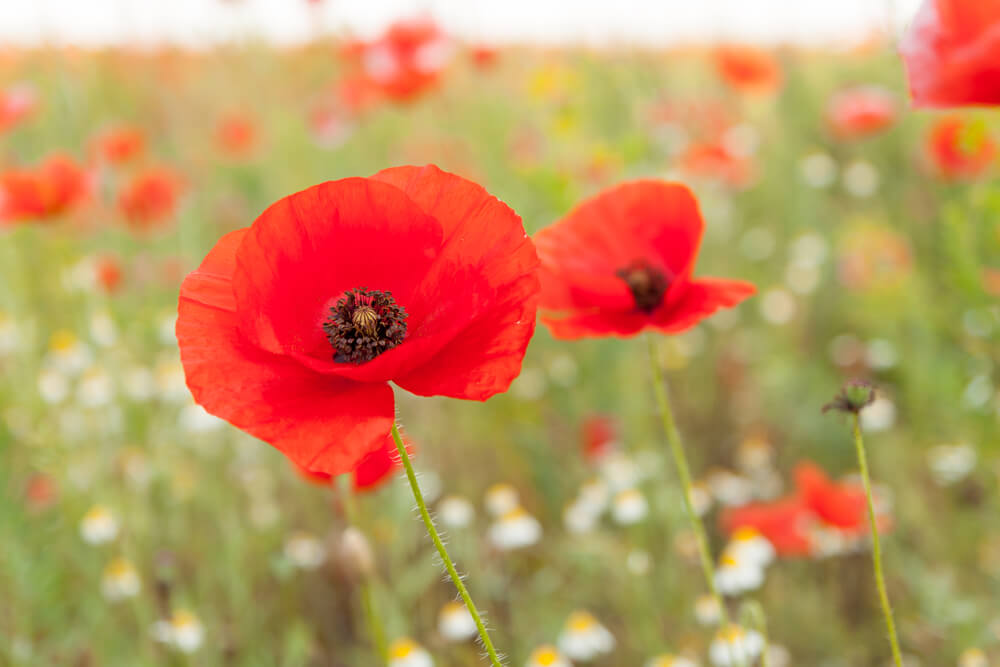Did you know that poppies are one of the easiest plants to grow? Even if you’re not a gardener, they can still be good plants to have.
Poppies are well known for their beautiful and delicate flowers.
They’re also great containers; they usually require little maintenance, don’t need much light, and they can thrive in low-light conditions as well.
Here are the top 7 reasons you should grow poppies as part of your garden this spring:
Poppies are one of the easiest plants to grow.
These little flowers come in a variety of shades and hues.
The most common poppy is red or purple with yellow markings on its petals (the inside parts of the flower).
As such, any patch of soil that is rich with these colorings will be sure to support poppies. Read on to find out more about growing poppies as well as tips on how to do it successfully!
Where is the best place to grow poppies?
If you live in the north, you might have difficulty growing poppies. Poppies don’t like the cold weather because the soil can freeze and kill them. To grow poppies even in colder climates, you need to plant them in pots.
Does poppy come back every year?
Poppies don’t usually come back every year.
However, the flowers can be harvested from the plant and replanted in the fall.
This will allow you to have a fresh new crop of flowers in your garden for next spring.
Some varieties may only bloom once or twice a year, so it’s best to check which variety you’re growing before planting them in your garden.
Some varieties also prefer not to be replanted in the fall; they’ll want to stay put and grow throughout the winter!
How long do poppies take to grow?
Poppies are one of the easiest plants to grow.
You can expect them to take about 4-6 weeks to reach maturity and flower.
The average life span for poppy is about 1 year, with some living up to 3 years.
The average house plant will take about 4-6 weeks to reach maturity, so don’t worry if your poppies look like they haven’t grown in weeks—they’re just taking their time!
Poppies require little maintenance These flowers require little attention, which makes them great for people who don’t have time or energy for gardening.
They don’t need much water and they don’t need much sunlight either.
Although poppy plants are hardy and able to survive in low-light conditions, they prefer bright sunlight as it helps them grow healthy leaves and stems as well as vibrant flowers.
Poppies typically come in pairs or small groups This makes them ideal for people who want a pretty flower but aren’t willing to spend too much on a single plant.
If you’re looking for an easy option that’s also affordable, then these flowers might be worth considering!
Poppies come in various colors and shades Some varieties of poppies have yellow petals with purple markings on their tips while other types have blue petals with white markings on their recommendations. These colors make these flowers unique from each other and beautiful additions
What is the best month to plant poppies?
The best time to plant poppies is in the springtime.
It’s when they need the most sun, but it’s also when they are blooming the most.
Poppies can typically be planted anytime between February and July.
If you don’t have fertile, rich soil, you can still grow these plants by using composting materials. Just make sure that your soil has been enriched with a good balance of organic matter such as peat moss and leaves!
If you want to put up a garden for this year and start growing your poppies soon, you should consider planting them in pots for now.
This will give them more room to grow than if you were to start from seed with fresh soil.
Remember that it takes about six months for your plants to bloom from seed, so plan accordingly!
There are lots of things to do with poppies once they begin blooming:
– You can propagate the flowers from individual blossoms into new plants
– You can cut off all but one flower on each stem of your poppy plant
– You can harvest the seeds for future plantings or storage
– You can dry the flowers and leaves for use in potpourri or other crafts.
This is just a brief overview of growing poppies.
If you want more information on how to grow these beautiful flowers, check out our website or contact us for more details!














